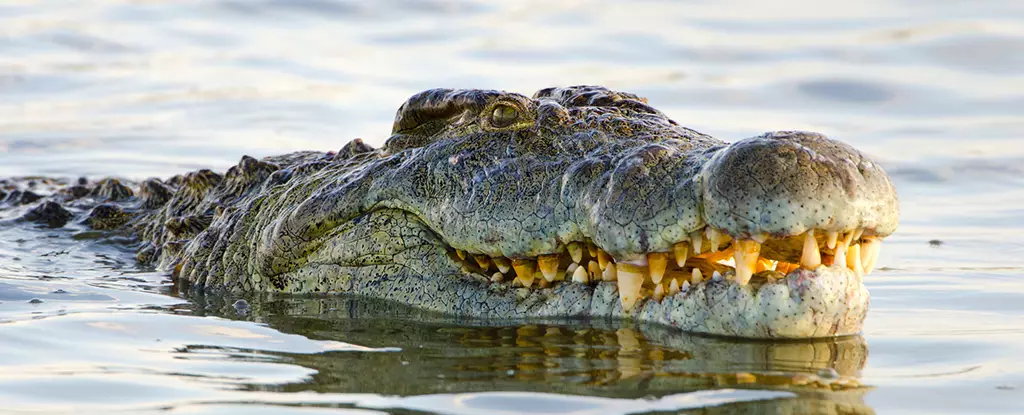The crocodile, a creature both ancient and enigmatic, has long fascinated scientists and the lay public alike. One of its most distinctive features is its unmistakable grin, a product of complex biological and mechanical processes that elicit curiosity about the creature’s evolutionary adaptations. Recent research emerging from the University of Geneva sheds light on how the crocodile constructs this signature wrinkled snout, revealing intricacies that go beyond mere biology.
The developmental mechanisms behind the unique arrangement of crocodile head scales stand apart from those observed in other vertebrates. Unlike mammals, birds, and other reptiles that generate their outer features from a series of structured placodes in the embryonic skin, crocodilians exhibit a fascinating deviation. The scientific inquiry spearheaded by Michel Milinkovitch, a biological scientist and leader of the Laboratory of Artificial and Natural Evolution (LANE), has unveiled critical insights into this extraordinary phenomenon. Specifically, the process through which these scales form is rooted not only in genetics but also in the interplay of mechanical forces during embryonic development.
At the heart of this exploration was the observation that crocodiles’ scales develop through mechanical interactions rather than the conventional biochemical patterns that drive the characteristics of other animals. Initially presumed to relate to tensile stress—a concept borrowed from the experience of human skin stretching—recent findings indicate that it is instead a matter of “compressive mechanical instabilities.” This modifies our understanding of how these intricate patterns emerge and reshapes the broader dialogue about integumentary system formation in vertebrates.
Crocodilian embryonic development unfolds with an initially smooth jaw structure that gradually morphs into a complex, creased design featuring irregular scales. This transformation is a product of skin growth dynamics, where the epidermis expands at a pace outstripping that of the underlying skeletal structures. The intersection of skin speed and stiffness reveals a contrast with the typical growth encountered in other species. In the crocodile, the skin’s rate of expansion leads to folds and creases resembling those of a Shar Pei puppy rather than the usual stretch marks experienced during human growth spurts.
Intriguingly, the research used epidermal growth factor (EGF) injections to understand better the mechanics behind scale patterning. This process increased the epidermis’s rigidity and accelerated its growth, allowing researchers to observe an exaggerated version of normal development. The resulting labyrinthine skin folds eventually transformed into a series of smaller polygonal head scales, suggesting that the process is intricately governed by the relationship between the skin and the underlying bone structure throughout the embryonic stages.
The variations seen in the head-scale patterns of different crocodilian species raise important questions regarding evolutionary biology. The differences likely stem from adaptations developed over millennia in response to environmental factors that favored certain dermatological characteristics. The compressive forces shaping ligatures of scales might also shed light on how these reptiles have thrived in diverse habitats while exhibiting significant physical variation.
What this means for our understanding of evolution is profound; the variations in scale patterns among crocodilian relatives, including caimans, may be influenced by subtle differences in embryonic skin growth processes favored by natural selection. Such intricate adaptations present a captivating lens through which whole organisms can be viewed, revealing how adaptability shapes the very forms of life on Earth.
The study of crocodile head scales is emblematic of a broader inquiry into the evolutionary mechanisms at play in shaping the characteristics of life. By unraveling the genetic, mechanical, and biological threads that contribute to a crocodile’s iconic smile, we gain insights not just into a single species but also into the larger tapestry of biodiversity. This ongoing research serves not simply to explain how a familiar creature achieves its distinctive look but also to foster a deeper appreciation for the complexities of life’s evolutionary processes.


Leave a Reply